SEO
Login Unavailable For All Users

OpenAI experienced several outages, including elevated error rates affecting Files and Fine-tuned model creation and the ChatGPT login becoming unavailable for logged-out users, including Plus subscribers.
Users could use the sign-in options, such as signing in with Google, but received the following message in their ChatGPT dashboard. Unlike a past ChatGPT outage, Plus subscribers were not given an alternative login link.
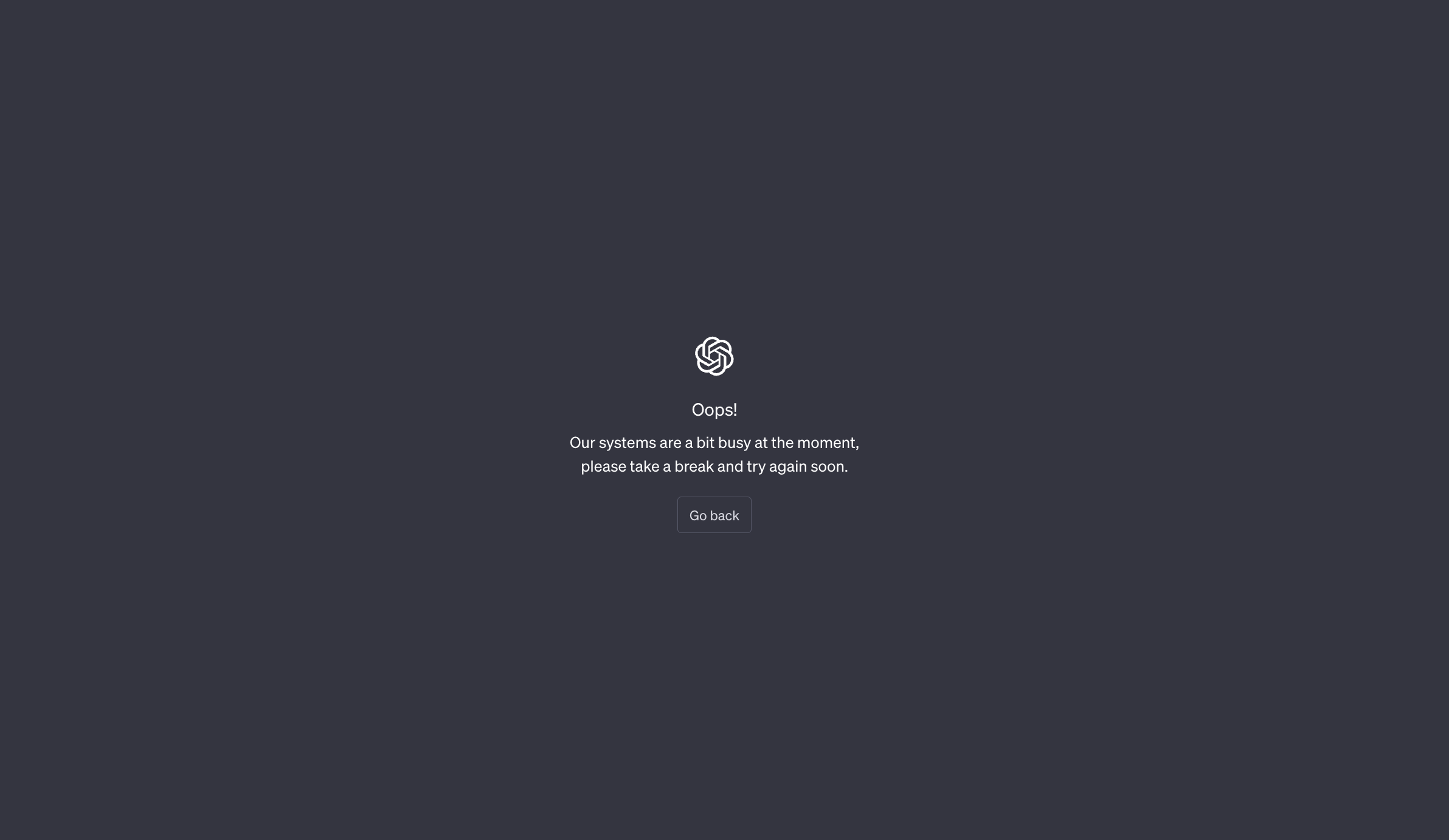 Screenshot from ChatGPT, June 2023
Screenshot from ChatGPT, June 2023The same happened when accessing ChatGPT in a mobile browser like Google Chrome.
Users could log in to the ChatGPT iOS app, which was able to use Bing to check the internet for more information about the outage.
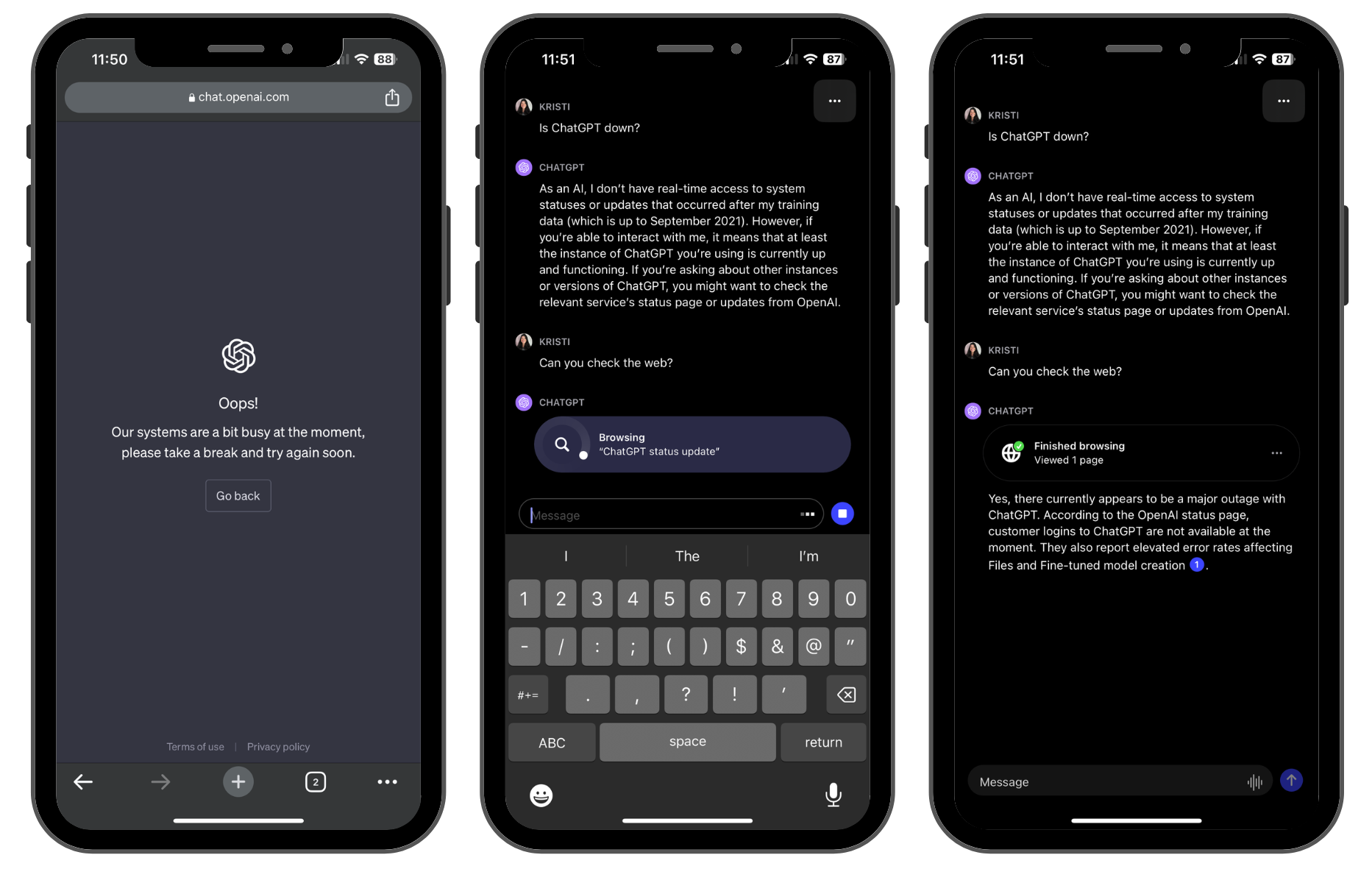 Screenshot from ChatGPT, June 2023
Screenshot from ChatGPT, June 2023Issues with ChatGPT and logins appeared on Downdetector.
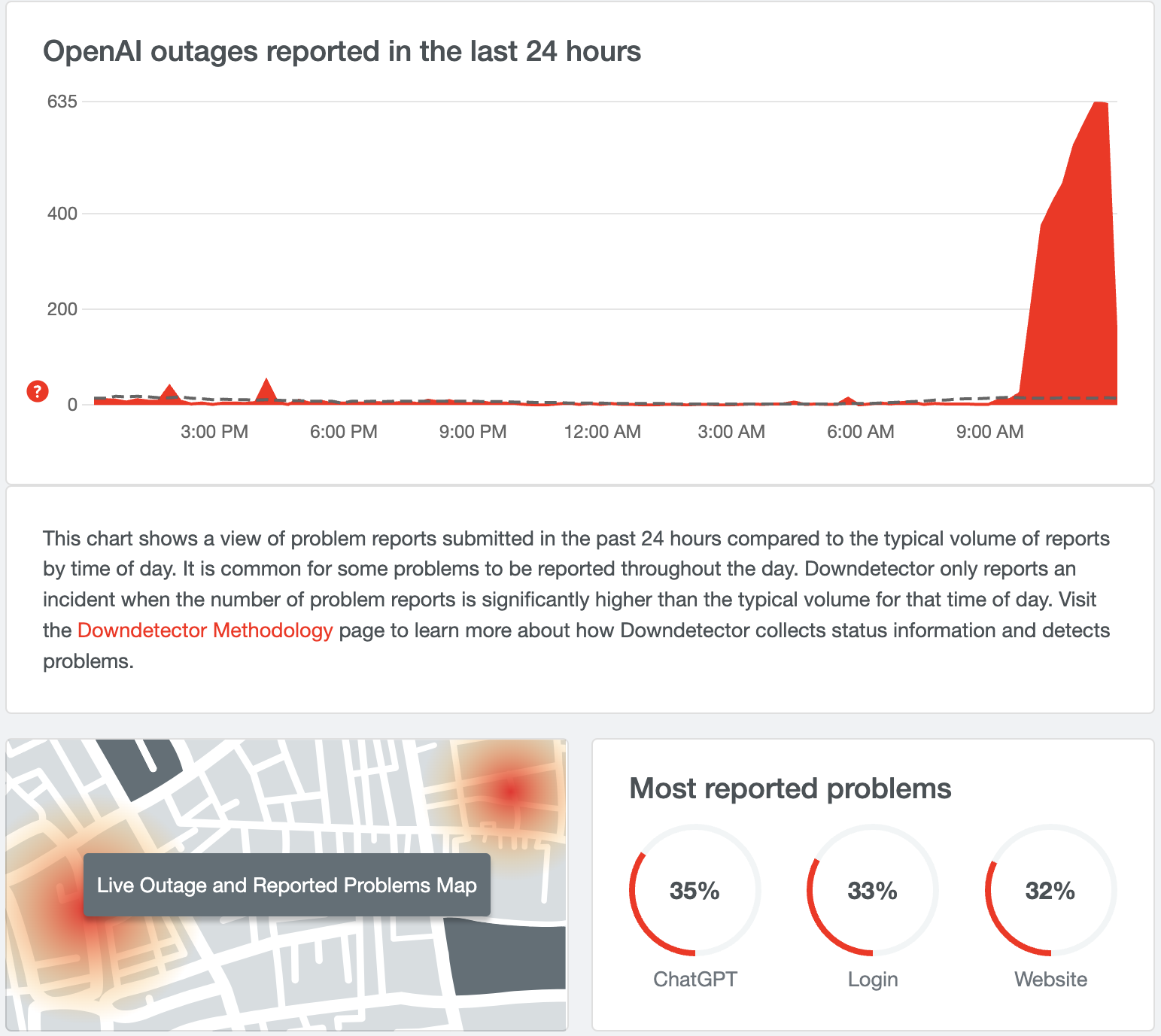 Screenshot from Downdetector, June 2023
Screenshot from Downdetector, June 2023OpenAI implemented a mitigation for ChatGPT logins and continued to monitor the situation to help users gain access to the AI chatbot again.
The issues affecting Files and Fine-tuned model creation are still under investigation.
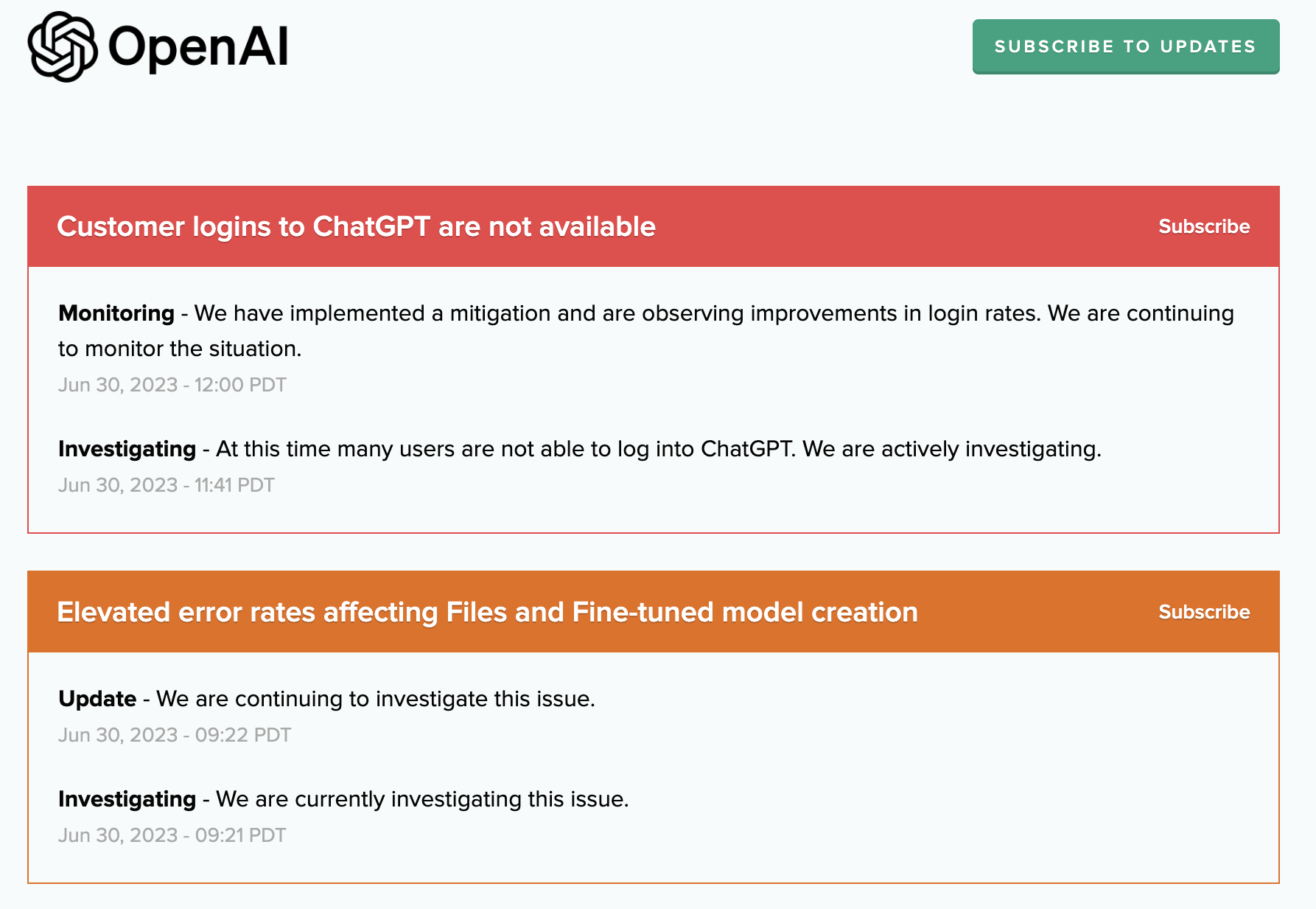 Screenshot from OpenAI, June 2023
Screenshot from OpenAI, June 2023The OpenAI uptime indicator labeled the ChatGPT login issue as a major outage.
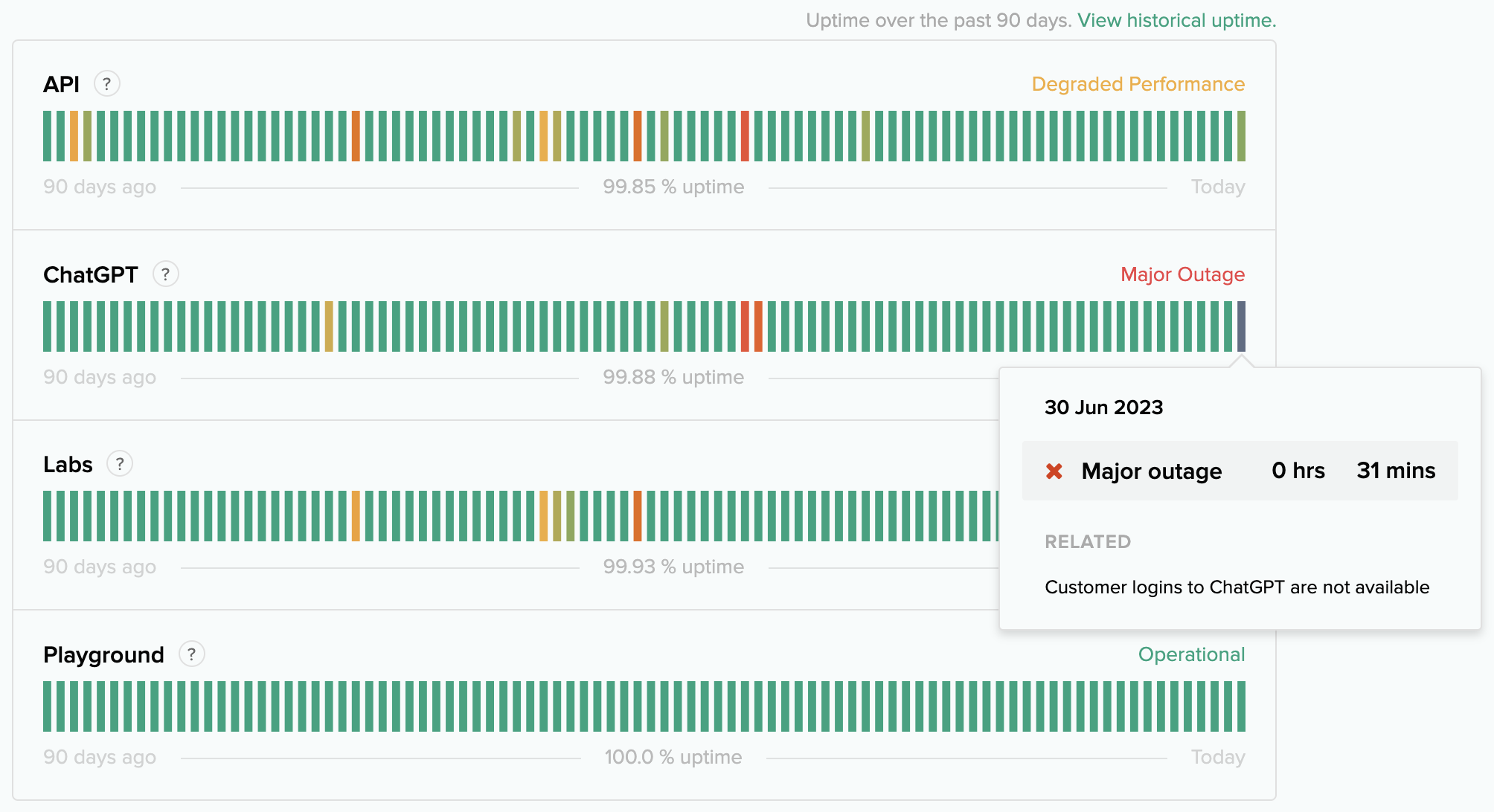 Screenshot from OpenAI, June 2023
Screenshot from OpenAI, June 2023ChatGPT was able to use Bing to explain the incident in further detail.
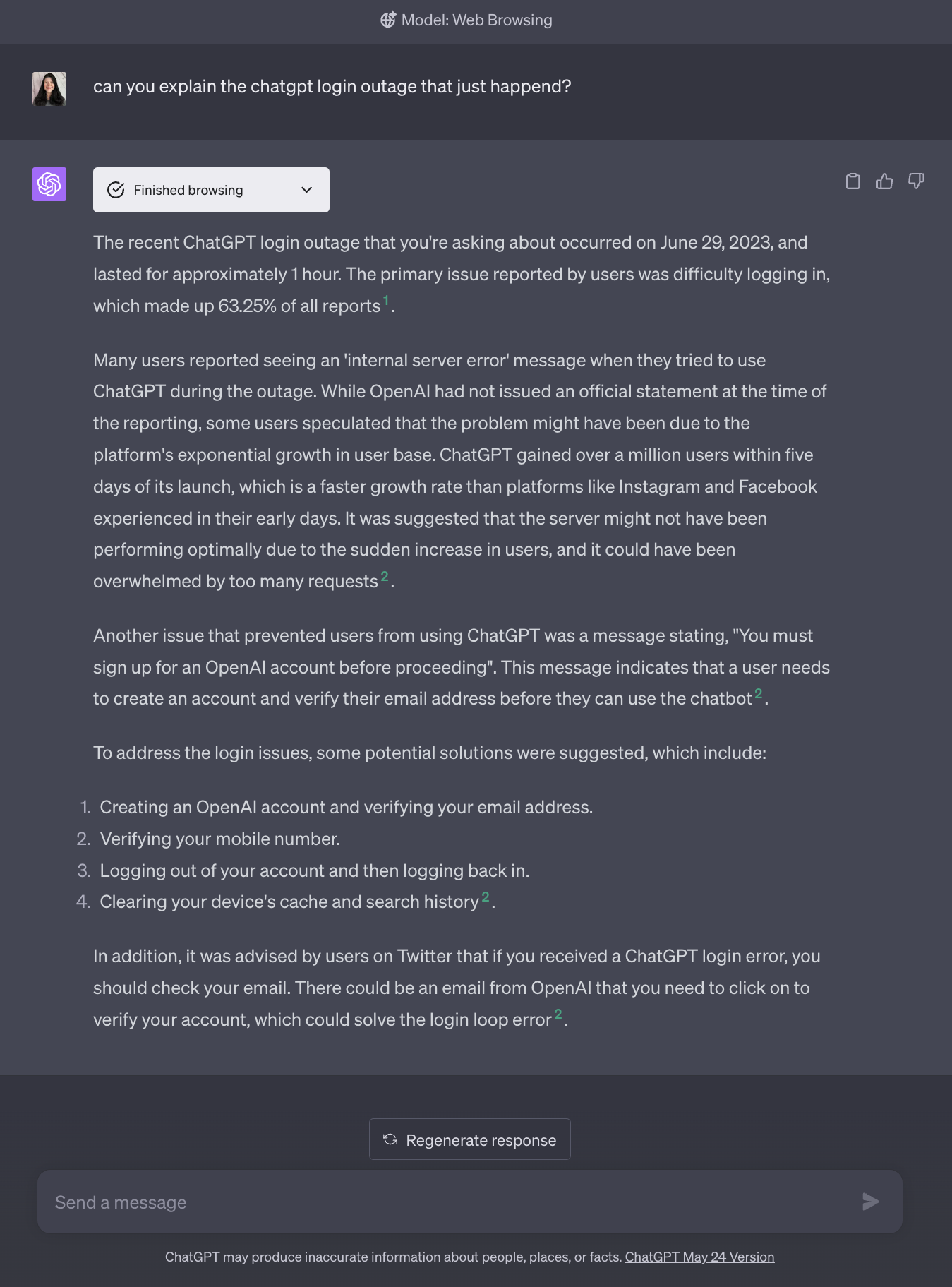 Screenshot from ChatGPT, June 2023
Screenshot from ChatGPT, June 2023The first source of information was a site similar to Downdetector, showing the problem with ChatGPT logins was resolved.
The second source of information, however, was an article that covered a login incident from December 2022. So not quite the correct information for this incident, but a good attempt while Browse with Bing is in the beta/experimental stage.
Users can sign up for updates on the OpenAI status page via email or text to find out when issues are resolved and get updates about the latest outages that might affect users of ChatGPT, OpenAI API, Labs, and Playground.
Featured image: Shutter.Ness/Shutterstock

















